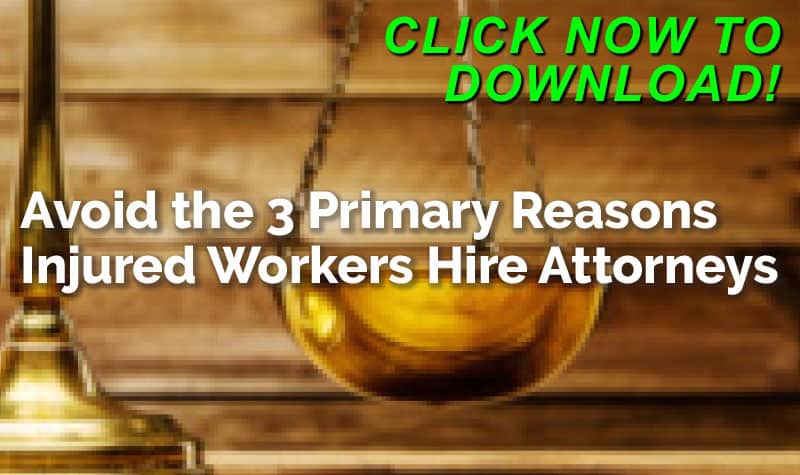
A recent Minnesota Workers’ Compensation Court of Appeals decision includes the same type of wild storyline that highlights employers’ and other defense interests’ struggles when asserting the “intoxication defense” and the difficulties they face when seeking to deny a claim. There are also lessons to learn in positioning these cases and succeeding at the hearing.
The Case: Cocaine, Vet, Blurry Eyes
In Morales v. Installed Building Products,1 the employer and insurer denied primary liability for injuries resulting from a severe motor vehicle accident. The basis for the denial was a positive post-injury blood test showing cocaine and other controlled substances in the employee’s bloodstream. The “intoxication defense” assertion was ultimately unsuccessful at the hearing, with the appeals court affirming the compensation judge’s decision.
Click Link to Access Free PDF Download
“Avoid the 3 Primary Reasons Injured Workers’ Hire Attorneys”
Highlights of the defense include several interesting factors:
- The employee admitted at hearing a history of frequent cocaine use and that he ingested cocaine while at a bar several nights before the accident;
- The employee’s use of expert testimony by a licensed veterinarian with a Master’s degree in forensic toxicology. The opinions of this expert were found more persuasive than the employer and insurer’s expert who specialized in medical toxicology, addiction and clinical pharmacology, and professional experience in occupational medicine, toxicology, pharmacology, biological toxins, and drug interactions; and
- The employee testified that his accident was caused when he lost control of his vehicle as dust from the fiberglass he previously installed on a job site irritated his eyes.
The compensation judge ultimately decided that the insulation affecting the employee’s eyes caused the accident and that any cocaine intoxication was not the proximate cause of the work injury/accident.
The Perils of the Intoxication Defense
In analyzing this and many other instances where an intoxication defense underscores there is more than meets the eye when successfully asserting it. In Morales, the employer and insurer offered expert testimony that demonstrated there was intoxication and an explanation that would proximately tie the work injury to the accident and resulting injuries:
- IME report that includes a review of the employee’s medical records, history, information regarding the employee’s prior and current use of cocaine, and an opportunity to see and examine the employee;
- Legitimate qualifications related to medicine and toxicology, addiction, and drug interactions on the human body by the independent medical expert; and
- Findings and opinions that met the elements of asserting the defense – testimony regarding “cocaine washout syndrome,” which resulted in fatigue and the accident.
Even with what would have been viewed as an ironclad defense and supporting evidence, the compensation judge adopted the findings and opinions of a veterinarian. Maybe this expert would have helped Siskel & Ebert with an insight into the newly famed Hollywood bear?
Case Takeaways on Intoxication Defense
There are several takeaways from this case that interested stakeholders can consider when asserting this defense.
- Eyewitness Testimony Is Key: Only two people were present during the accident – the employee and a coworker. The coworker testified there were no observable signs of “intoxication” or drug use immediately before the accident. The employee provided a reasonable explanation for why he took his hands off the steering wheel – he had fiberglass dust in his eyes.
- Credible Expert Testimony: Both parties had highly credible experts to support their position. Clinical experience and how controlled substances affect human behavior are vital.
- It Is All About Proximate Cause: This is not the first time defense interests in Minnesota (and other places) have failed to assert this defense. In another memorable Minnesota case, the employee had a blood alcohol level of 0.30 at the time of a fall from height. This case included testimony from an employer representative that “characterized the employee as a meticulous and good craftsman,” even when intoxicated.2
Another takeaway to consider is this defense is not 100% certain.
Conclusions
Defenses interests should continue to defend claims where it would appear the employee was injured due to their intoxication. When defending these claims, it is crucial to remember the facts that drive them and require a complete investigation. Medical evidence must also tie the intoxication to the injury – be its proximate cause. This includes a well-qualified expert in impenetrable testimony and maybe a little luck.
1 No. WC22-6485 (MN WCCA 3/27/2023).
2 Kowalik v. Martinson Construction, slip op. (MN WCCA 7/8/2004).

Contact: mstack@reduceyourworkerscomp.com.
Workers’ Comp Roundup Blog: http://blog.reduceyourworkerscomp.com/
©2023 Amaxx LLC. All rights reserved under International Copyright Law.
Do not use this information without independent verification. All state laws vary. You should consult with your insurance broker, attorney, or qualified professional.










